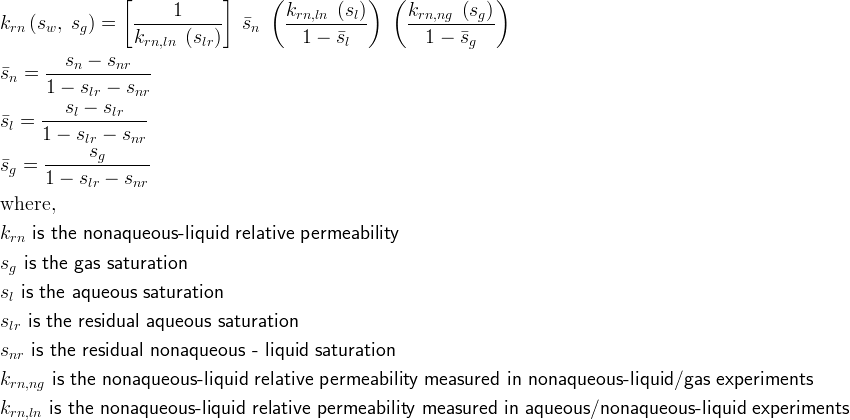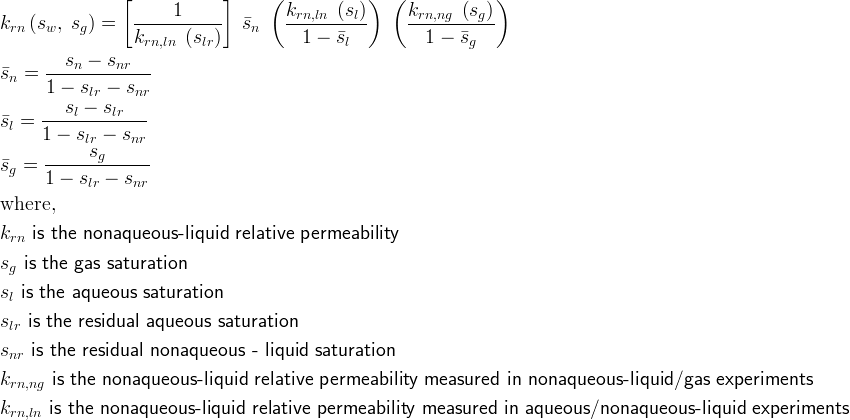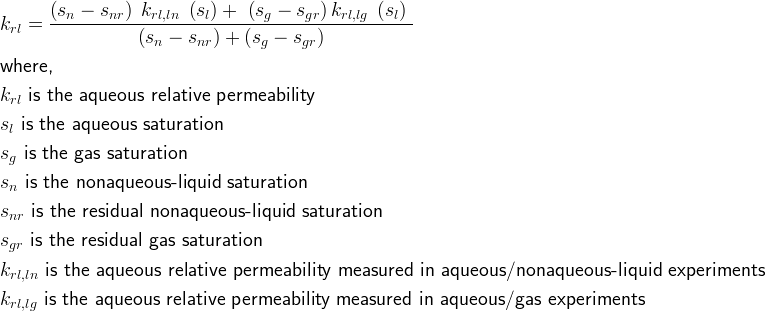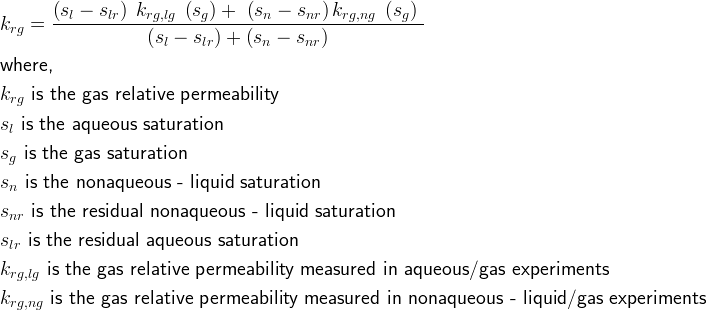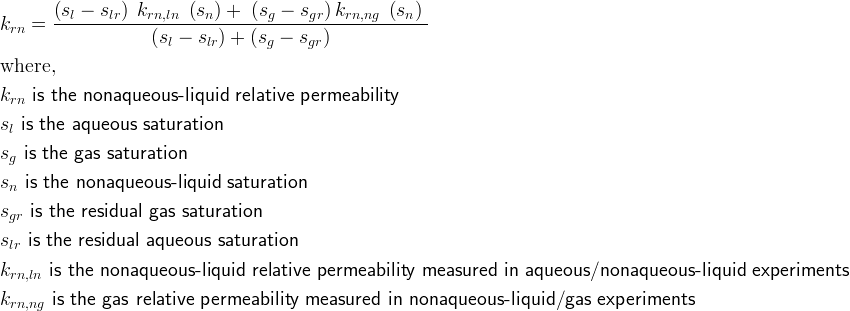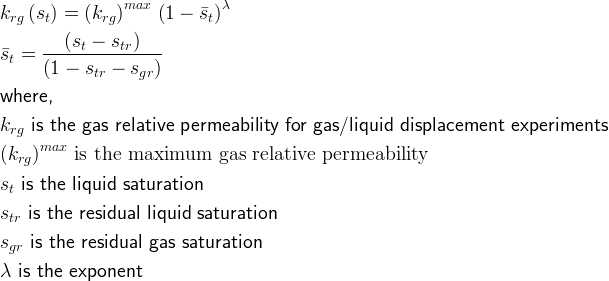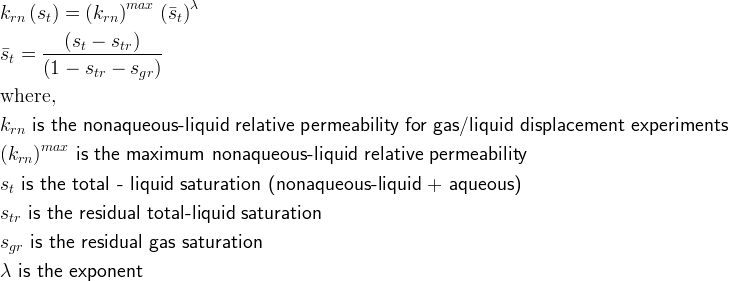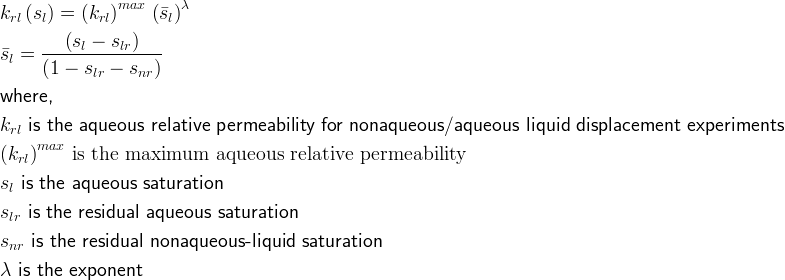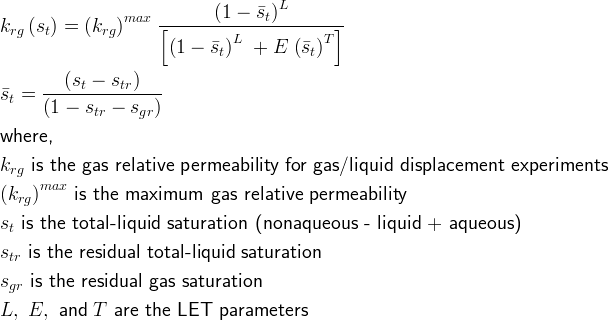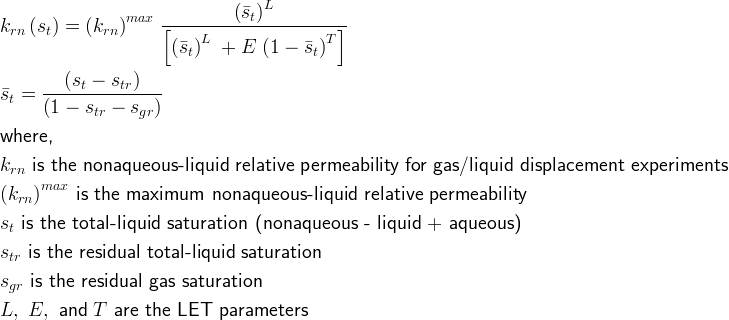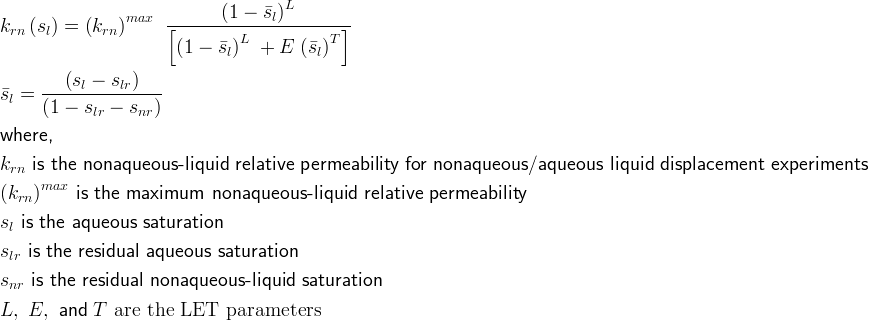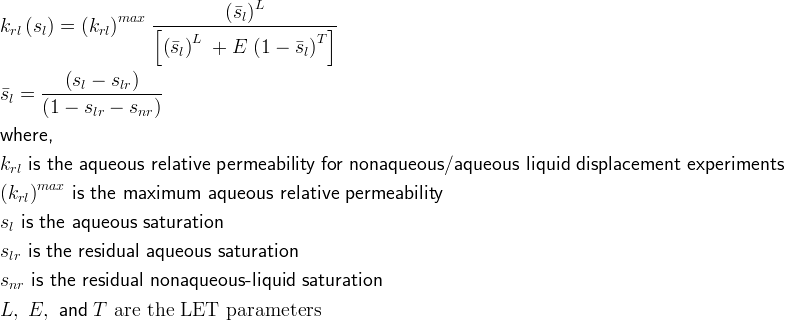3 Phase Relative Permeability Options (EOR-BO)
STOMP-EOR and STOMP-EOR-BO consider three mobile phases: 1) aqueous, 2) nonaqueous-liquid, and 3 gas, each with a unique relative permeability. Relative permeability often varies by orders of magnitude with saturation and often is the most nonlinear component of the governing equations and constitutive relationships. For carbon sequestration in deep saline reservoirs the relative permeability of the supercritical CO2-rich phase has been shown to a critical parameter for predicting formation injectivity and the fate of injected CO2[1,2]. A similar situation occurs for petroleum reservoirs; where, there is the potential for three or occasionally four relative permeability functions, but the situation is complicated by the potential for miscibility of the injected CO2 with the oil under reservoir pressure and temperature conditions. The classical approach for predicting relative permeabilities for petroleum reservoirs is to combine binary (aqueous - nonaqueous liquid (i.e., oil-water); and nonaqueous liquid-gas (i.e., oil-gas) relative permeability relationships to yield three-phase relative permeabilities (aqueous, nonaqueous-liquid, and gas). Stone-I[3], Stone-II[4], and Baker[5] combination models are common approaches and currently implemented in STOMP-EOR and STOMP-EOR-BO.
Combination Model Options (EOR) or (EOR-BO)
Binary Model Options (EOR) or (EOR-BO)
References
[1] Bennion, B, and S Bachu. 2005. “Relative permeability characteristics for supercritical CO2 displacing water in a variety of potential sequestration zones in the Western Canada Sedimentary Basin. Society of Petroleum Engineers, SPE 95547, In proceedings of 2005 SPE Annual Technical Conference and Exhibition held in Dallas, Texas, USA, 9-12 October 2005.
[2] Juanes, R, EJ Spiten, FM Orr Jr, and MJ Blunt. 2006. “Impact of relative permeability hysteresis on geological CO2 storage.” Water Resources Research, 42:W12418, doi:10.1029/2005WR004806.
[3] Stone, HL. 1970. “Probability model for estimating three-phase relative permeability.” Journal of Petroleum Technology, 22(2):214–218. SPE-2116-PA. http://dx.doi.org/10.2118/2116-PA.
[4] Stone, HL. 1973. “Estimation of three-phase relative permeability and residual oil data.” Journal of Canadian Petroleum Technology, 12(4):53-61. http://dx.doi.org/10.2118/73-04-06.
[5] Baker, LE. 1988. “Three-phase relative permeability correlations.” Presented at the SPE Enhanced Oil Recovery Symposium, Tulsa, Oklahoma, 16-21 April 1988. SPE-17369-MS. http://dx.doi.org/10.2118/17369-MS.
STOMP User Guide Home
- Simulation Title Card
- Solution Control Card
- Grid Card
- Inactive Nodes Card
- Rock/Soil Zonation Card
- Mechanical Properties Card
- Hydraulic Properties Card
- Saturation Function Card
- 3 Phase Relative Permeability Card
- Salt Transport Card
- Black Oil Properties Card
- Solute/Fluid Interaction Card
- Solute/Porous Media Interaction Card
- Initial Conditions Card
- Boundary ConditionsCard
- SourceCard
- Coupled Well Card
- Output Control Card
- Surface Flux Card



